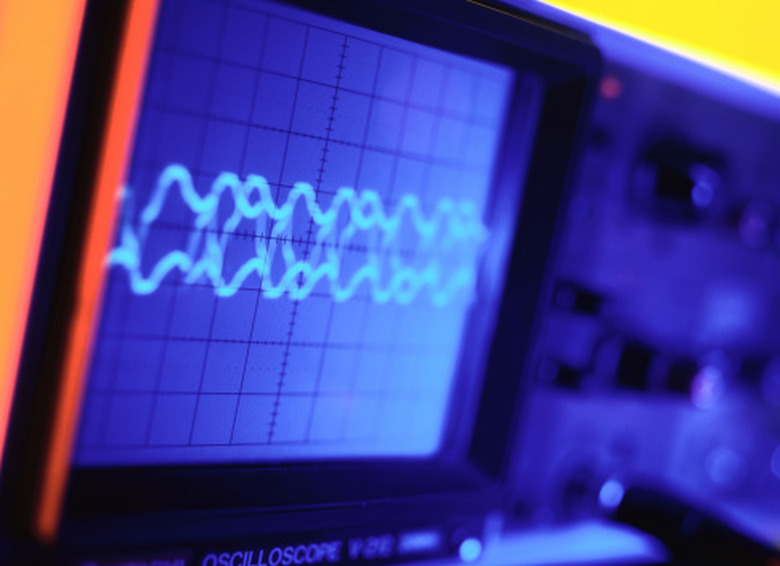How To Read Oscilloscopes
Oscilloscopes measure and plot the wave shape of an electrical signal. Because of their importance in electrical diagnostics, they are indispensable equipment for electricians. Oscilloscopes record incoming signals on a two dimensional graph which shows period, amplitude, peak voltage, peak to peak voltage and frequency.
Step 1
Find the x-axis and y-axis on the oscilloscope's output display. The x-axis shows time, and the y-axis shows voltage.
Step 2
Note the shape of the signal. Most signals will appear as sine waves, periodic curves with a regular shape, although analysis can be completed on non-sine waves, as long as the signal maintains a constant shape. Voltage waves exhibit both positive and negative voltages.
Step 3
Find the period of the signal. The period is the time required for the signal to complete one wave.
Step 4
Note the amplitude of the wave. The amplitude is the distance from the x-axis to the highest point in the wave. This distance is also called the peak voltage.
Step 5
Note the peak to peak voltage. The peak to peak voltage is the vertical distance from the trough of the wave to the peak. You can easily find the peak to peak voltage by doubling the amplitude of the wave.
Step 6
Find the frequency of the signal. The frequency is the number of cycles per second, and is measured in hertz.
TL;DR (Too Long; Didn't Read)
Time measures are traditionally taken in seconds, but functionally you can use milliseconds and microseconds as well.
Cite This Article
MLA
Cohen, Michael. "How To Read Oscilloscopes" sciencing.com, https://www.sciencing.com/read-oscilloscopes-8603078/. 24 April 2017.
APA
Cohen, Michael. (2017, April 24). How To Read Oscilloscopes. sciencing.com. Retrieved from https://www.sciencing.com/read-oscilloscopes-8603078/
Chicago
Cohen, Michael. How To Read Oscilloscopes last modified March 24, 2022. https://www.sciencing.com/read-oscilloscopes-8603078/
